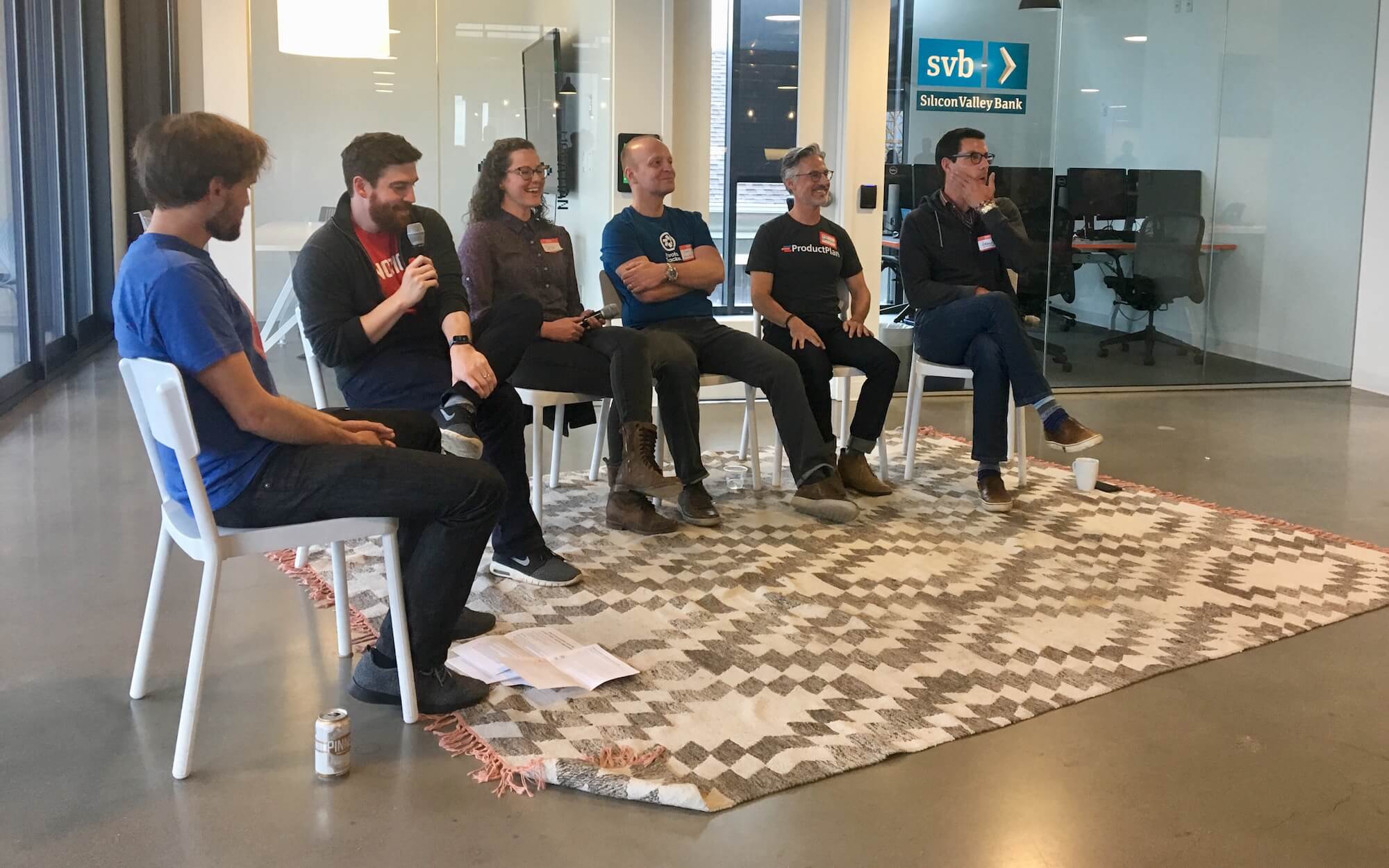How do you effectively scale a product team from just a handful of product managers to several dozen? What skills are important for product managers working at startups? What metrics are important for teams of different sizes?
Those were some of the questions that panelists at our recent Product Stack event in Denver discussed. Product managers from companies of all sizes met at Galvanize in Denver to share intel and discuss how to best scale product organizations. The event was moderated by Jay Zeschin, co-founder of Denver Startup Week, and featured panelists from ProductPlan, Pivotal Tracker, Notion, GoSpotCheck, and CirrusMD.
You can watch the full panel discussion or read our summary below. Here are some of the highlights:
- Jim Semick from ProductPlan explains why early stage PMs need to get to market fast.
- Aaron Duke from CirrusMD talks about the importance of hiring well at every stage of an organization.
- Jess Sherlock from GoSpotCheck shares how to identify and formalize processes that work as your company scales.
Summary of the Panel Discussion
Jay Zeschin led panelists through a conversation about challenges that product managers face at companies of all stages, from startups to mature enterprises. The discussion focused on how organizations can scale smoothly, and on the skillsets that product teams in particular can bring to the table to help their companies grow.
The panelists agreed that it’s important for product managers at early stage companies to listen carefully to customer problems and conduct thorough market validation. Too many product managers and startup founders get locked into an initial product idea and try to force-fit their solution to the market. But, according to the panelists, being too product-focused at an early stage can be a mistake. You have to look beyond feature sets and think about the business model as a whole — ask yourself, “Who is our customer and how will we scale?”
The panel also discussed how product teams should go about defining product success. The consensus was that it’s important to hone in on a just a few key metrics that help you understand whether or not the business model is viable (like monthly recurring revenue and churn for SaaS companies). Avoid vanity metrics because it’s easy to lie with data or see what you want to see. The panelists agreed that product managers should come to an agreement upfront with their stakeholders about what constitutes success.
The conversation also turned to avoiding silos, the value of cross-functional teams, and the importance of implementing formal processes early on so that you can scale more easily. Product managers, engineers and designers used to work fairly independently in separate departments. But today, more and more companies are integrating those teams and blurring the lines between roles. The panelists talked about the value of structuring product organizations into cross-functional teams that work cohesively toward common goals. Overall, everyone agreed that closing communication gaps is the key to success.
The roadmap is one of the primary tools that product managers use to communicate plans to their stakeholders, and roadmaps were also a subject of much debate among the panelists. Many agreed that it’s a challenge to build roadmaps that don’t change every two weeks. They discussed what the proper level of granularity and proper length for a roadmap should be, as well as how to go about managing stakeholder expectations. They agreed that most agile organizations should move away from date-driven roadmaps and instead focus on the relative priority level of initiatives. Everything on the roadmap should ultimately tie back to high-level business goals.
Jay kicked off the event by giving an overview of Ello’s growth (Jay is a co-founder of Ello). He discussed how he grew Ello and ultimately gained traction in the market. Jay’s story serves as a great case study on scaling product teams. You can watch his full presentation below:
Do you have experience in scaling a product organization? Let us know what worked for you and what didn’t in the comments below.



